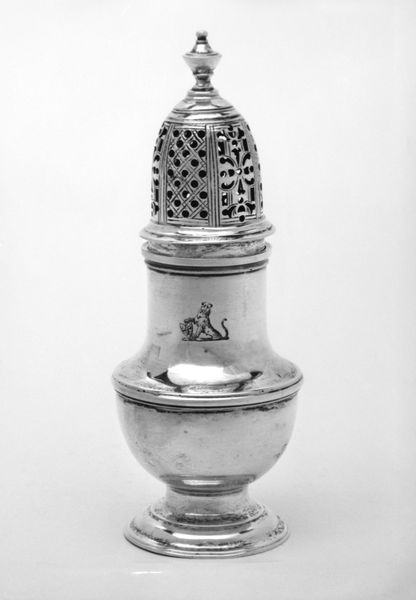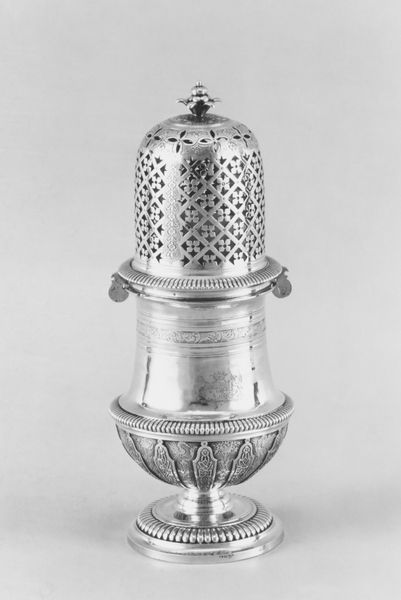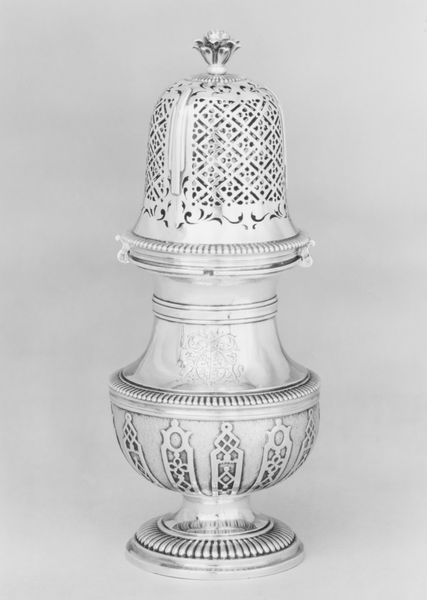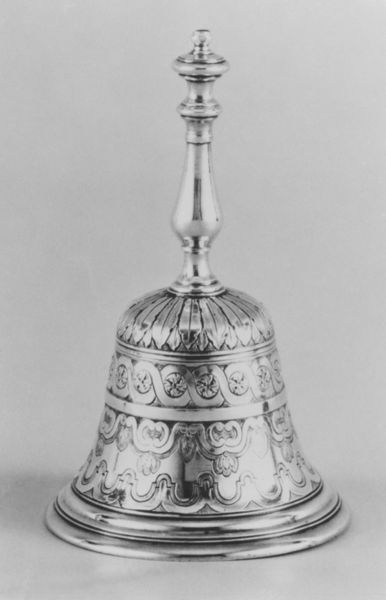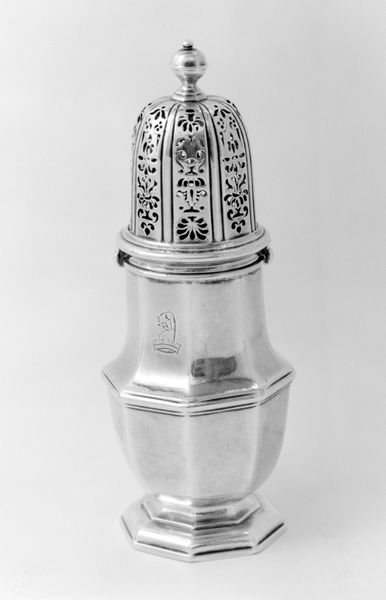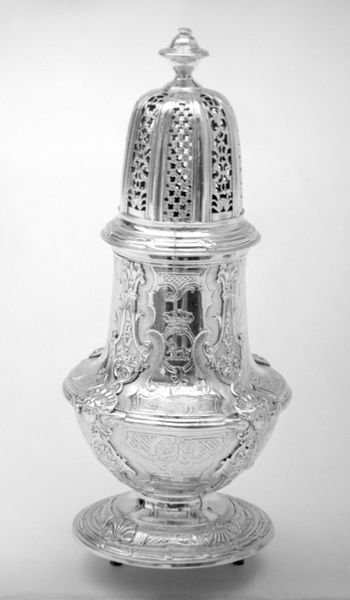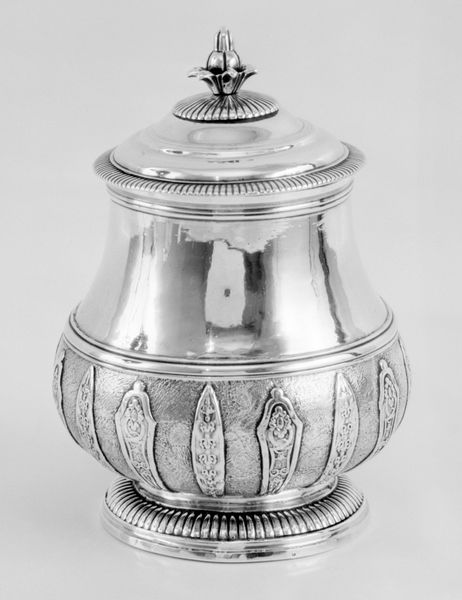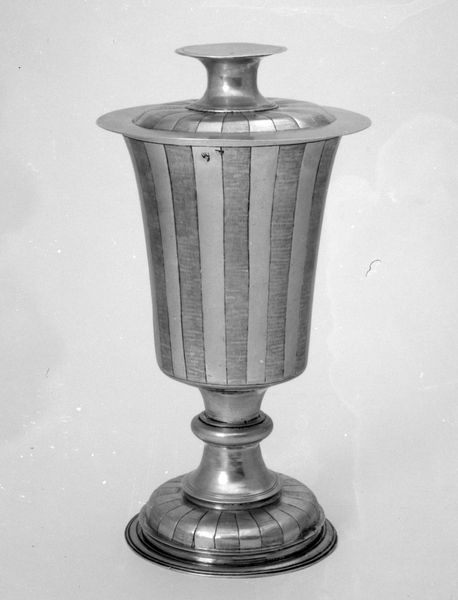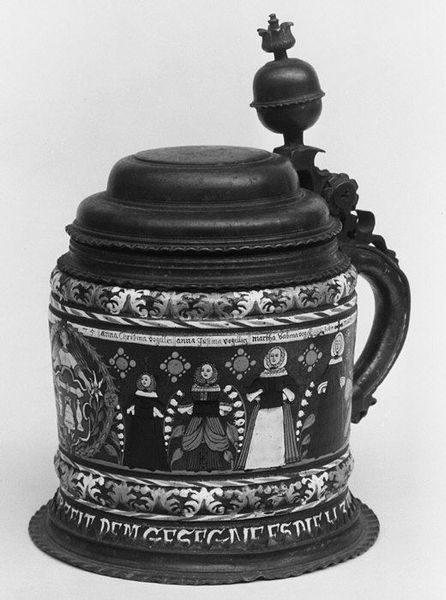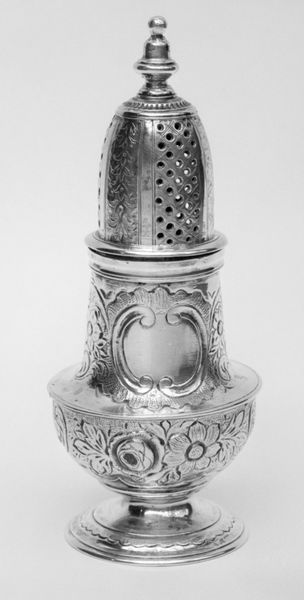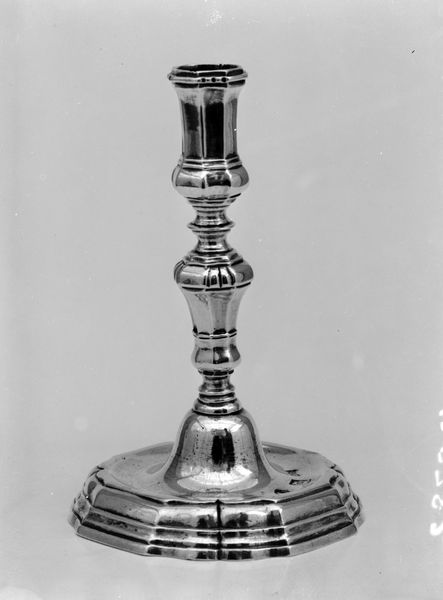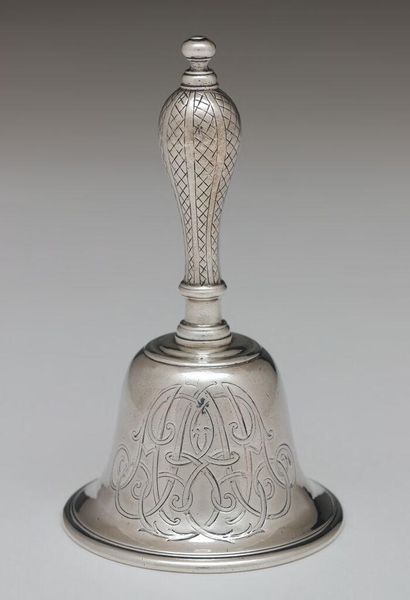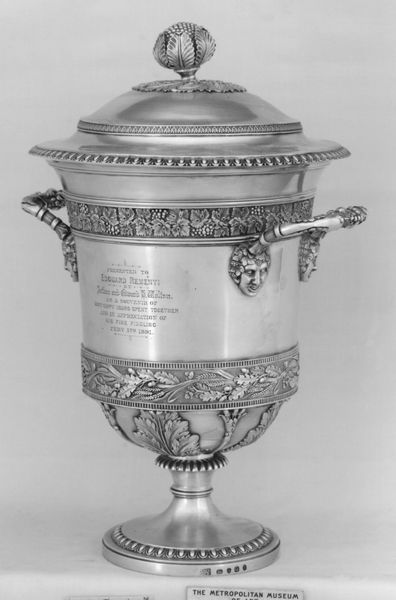
silver, sculpture
#
silver
#
baroque
#
sculpture
#
decorative-art
Dimensions: Height: 9 in. (22.9 cm)
Copyright: Public Domain
Editor: Here we have a silver sugar caster, crafted around 1739-1740 by Pierre Belleville. Its intricate patterns are eye-catching. What strikes me is the way it elevates such a common substance. What's your take? Curator: I see this object as revealing much about the means of production in the early 18th century. Silverwork wasn't merely aesthetic; it reflected the complex systems of extraction, trade, and specialized labor. How do you think this intersects with the sugar itself? Editor: Well, sugar at that time was a luxury, closely tied to colonialism and the exploitation of labor. So, having it served from this ornate piece highlights its exclusivity. Curator: Precisely. Consider the silversmith's craft itself. The maker, Belleville, relied on an entire supply chain, and this decorative-art object speaks to the social stratification embedded in its production. Who owned these, and how did its existence reinforce particular relationships of power? Editor: I guess owning a sugar caster like this made a powerful statement. Not only that one can afford sugar but can also invest in such fine craftsmanship. Do you see it as purely functional, then, or as a form of… I don’t know… propaganda almost? Curator: It's functional, but function is never neutral. Its elaborate design and expensive materials subtly promoted the owner’s status and reinforced the prevailing economic and social order. That lattice-work could only come about with great skill, and tools made by… someone. Where was that silver mined? How much did they make? Who could access one of these? These questions get lost if you focus just on style and 'beauty.' Editor: I see what you mean. Focusing on materials and the making process reveals the wider web of social relations embedded within the object. Curator: Indeed. Understanding its materiality and its context in consumption broadens our appreciation beyond aesthetics, toward a more critical engagement with the past. Editor: Thanks, that definitely gives me a new perspective! I won’t just look at these as objects in isolation.
Comments
No comments
Be the first to comment and join the conversation on the ultimate creative platform.
